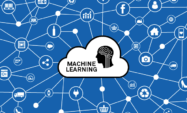SAP Machine Learning
Filter By
Browse By
- SAP Analytics and AI
- SAP Application Development and Integration
- All SAP Application Development and Integration
- SAP ABAP
- SAP ABAP Development Tools
- SAP ABAP Test Cockpit
- SAP API Management
- SAP BAPI
- SAP Basis
- SAP BRF
- SAP Business Application Studio
- SAP CMS
- SAP Design Studio
- SAP Development Tools
- SAP DevOps
- SAP EAI
- SAP EDI
- SAP Extension Suite
- SAP Fiori
- SAP Fiori Elements
- SAP Integration Suite
- SAP Low Code Application Development
- SAP Low Code Automation
- SAP Netweaver
- SAP Release Management
- SAP UI5
- SAP Web Application Server
- SAP Web IDE
- SAP Business Process Management
- SAP Center of Excellence
- SAP CIO
- SAP Customer Experience
- SAP Data and Data Management
- All SAP Data and Data Management
- SAP BW
- SAP BW/4HANA
- SAP Crystal Reporting
- SAP Data Archiving
- SAP Data Center
- SAP Data Governance
- SAP Data Integration
- SAP Data Migration
- SAP Data Quality
- SAP Data Services
- SAP Data Strategy
- SAP Data Visualization
- SAP Data Warehouse Cloud
- SAP DMS
- SAP Document Control
- SAP EIM
- SAP ETL
- SAP ETL Tools
- SAP HANA
- SAP HANA Administration
- SAP HANA Deployment Infrastructure
- SAP HANA Studio
- SAP Master Data
- SAP Master Data Governance
- SAP MDM
- SAP Enterprise Architect
- SAP Enterprise Asset Management
- SAP ERP
- SAP Finance
- All SAP Finance
- SAP Accounting
- SAP AR AP
- SAP Asset Accounting
- SAP Billing Systems
- SAP BPC
- SAP BRIM
- SAP Cash Management
- SAP Central Finance
- SAP Controlling
- SAP COPA
- SAP Cost Center Accounting
- SAP e-invoicing
- SAP FICO
- SAP Finance Automation
- SAP Financial Closing Cockpit
- SAP Financial Consolidation
- SAP Financial Planning
- SAP FX Risk
- SAP General Ledger
- SAP Global Tax Management
- SAP Hyperion
- SAP Order to Cash
- SAP Payment Processing
- SAP Profitability Analysis
- SAP Rebate Management
- SAP S/4HANA Finance
- SAP Universal Journal
- SAP Governance Risk and Compliance
- SAP Human Capital Management
- SAP Intelligent Technologies
- SAP Platform and Technology
- All SAP Platform and Technology
- SAP Business Technology Platform
- SAP Cloud Connector
- SAP Cloud Integration Platform
- SAP Cloud Migration
- SAP Cloud Platform
- SAP Cloud Providers
- SAP Cloud Strategy
- SAP Container Platform
- SAP Digital Asset Management
- SAP Digital Integration Hub
- SAP Digital Signature
- SAP HANA Enterprise Cloud
- SAP HEC
- SAP Hyperscalers
- SAP Infrastructure
- SAP Messaging
- SAP Smart Forms
- SAP Quality and Testing
- SAP Security
- SAP Spend Management
- SAP Supply Chain Management
- All SAP Supply Chain Management
- SAP APO
- SAP Asset Management
- SAP Business Network
- SAP Digital Manufacturing Cloud
- SAP Digital Twin
- SAP EWM
- SAP IBP
- SAP Inventory Management
- SAP Label Printing
- SAP Logistics
- SAP Manufacturing
- SAP Manufacturing Automation
- SAP MES
- SAP MII
- SAP MM
- SAP MRO
- SAP MRP
- SAP Order Management
- SAP Plant Maintenance
- SAP PLM
- SAP Production Planning
- SAP S&OP
- SAP SD
- SAP SPM
- SAP Supply Chain Planning
- SAP Track and Trace
- SAP Transportation Management
- SAP System Administration
Machine Learning Features in SAP Products
What is Machine Learning?
Machine learning (ML) is a subset of artificial intelligence (AI) algorithms. The differentiating aspect of these algorithms is that they can learn from the input data and modify the model based on changes in that data. It is this “learning” aspect that makes these algorithms powerful.
Machine Learning Applications in SAP Portfolio
SAP applications leverage ML algorithms extensively to embed innovative capabilities within their solutions, help end-users perform advanced analytics with minimal technical proficiency, and allow data scientists and ML engineers to build advanced models and solutions. Below are some examples:
- SAP HANA
SAP HANA has been designed to be easily leveraged as a scalable ML platform. A powerful built-in tool is the predictive analytics library (PAL). A component of the application function library in HANA, PAL includes several algorithms to enable the most frequently used predictive analytics use cases. For advanced users who want to explore advanced algorithms like deep learning, extended machine library (EML) in HANA allows such users to leverage TensorFlow to build deep learning algorithms.
- SAP Data Intelligence
SAP data intelligence has a rich ML content library. This library, which has an ML scenario manager and ML operations cockpit, allows engineers and data scientists to collaborate and build ML models.
- SAP Analytics Cloud Smart Predict
Like most best-of-breed analytics tools, SAP Analytics Cloud provides users the ability to leverage advanced ML algorithms. While ML algorithms have many applications, predictive analytics remains a key one.
Key Considerations for SAPinsiders
Machine Learning Features in SAP Products
What is Machine Learning?
Machine learning (ML) is a subset of artificial intelligence (AI) algorithms. The differentiating aspect of these algorithms is that they can learn from the input data and modify the model based on changes in that data. It is this “learning” aspect that makes these algorithms powerful.
Machine Learning Applications in SAP Portfolio
SAP applications leverage ML algorithms extensively to embed innovative capabilities within their solutions, help end-users perform advanced analytics with minimal technical proficiency, and allow data scientists and ML engineers to build advanced models and solutions. Below are some examples:
- SAP HANA
SAP HANA has been designed to be easily leveraged as a scalable ML platform. A powerful built-in tool is the predictive analytics library (PAL). A component of the application function library in HANA, PAL includes several algorithms to enable the most frequently used predictive analytics use cases. For advanced users who want to explore advanced algorithms like deep learning, extended machine library (EML) in HANA allows such users to leverage TensorFlow to build deep learning algorithms.
- SAP Data Intelligence
SAP data intelligence has a rich ML content library. This library, which has an ML scenario manager and ML operations cockpit, allows engineers and data scientists to collaborate and build ML models.
- SAP Analytics Cloud Smart Predict
Like most best-of-breed analytics tools, SAP Analytics Cloud provides users the ability to leverage advanced ML algorithms. While ML algorithms have many applications, predictive analytics remains a key one.
Key Considerations for SAPinsiders
- Develop a fundamental understanding of algorithms: Explore what specific algorithms are available and understand where they can be leveraged. This will help you get optimal value from these tools. As an example, you should be aware that you can use clustering algorithms for customer segmentation. Here is an example of a good overview of critical algorithms used in SAP applications.
- Understand the limitations of underlying data infrastructure: Understanding aspects of the underlying database is also critical. This helps you build pragmatic models. As an example, HANA has a 2 billion rows limitation, and hence you may have to partition tables for data sets larger than that. This impacts your model development as well.
- Understand the limitations of tools available: Some PAL algorithms have limits on the number of parameters. This means you will have to pay more attention to feature selection or feature engineering while building models with these algorithms. You can find several examples of these limitations on the SAP help portal and SAP blogs.
698 results
-

Predictive Solutions for Optimized Asset Maintenance
Reading time: 3 mins
Enhance your asset management with cutting-edge Predictive Maintenance solutions tailored for the manufacturing industry. Predictive Maintenance utilizes advanced data analysis and machine learning techniques to anticipate machine failures, boosting reliability, minimizing breakdowns, and slashing maintenance costs. By proactively addressing potential issues, companies can ensure uninterrupted operations, maximize productivity, and extend the lifespan of equipment. Discover…
-

Don’t Let Your Sustainability Footprint Leave You Behind
Reading time: 6 mins
Sustainability was once primarily associated with green initiatives. Today, the term “sustainability” encompasses several environmental, economic, and societal issues, such as affordable and clean energy, reduced inequality, and zero hunger, that require the world’s immediate attention. As one critical group of actors among many, corporations are on the front lines driving sustainable development across the…
-

Elevating HR to New Heights in the Cloud
Reading time: 32 mins
As companies continue to digitize their operations to adapt to a new business reality, there is one area in particular that is poised to reap significant rewards — HR. Digitized HR has the potential to not only streamline processes, but also boost employee satisfaction, increase retention, and attract new talent. For many SAP customers, digitizing...…
-
-

Innovating for Exceptional Customer Experiences
Reading time: 17 mins
Stephanie: Hi! Welcome to the SAPinsider Podcasts on interviewing customer experience. My name is Stephanie So, and I am a Marketing Manager of SAP Cloud Platform at SAP. I’m your host today, and we are joined by a panel of experts to discuss the latest trends in digital technology and transformation. First on our panel...…
-

- SAP Talent Management
 Premium
Premium
Solving Training Administration Challenges by Setting Up Organizational Units and Job Structures in SAP SuccessFactors Learning
Reading time: 8 mins
Learn how setting up organizational units and job codes can help overcome some of the common SAP SuccessFactors Learning administration challenges. Use these simple steps to implement organizational units and job structures in the SAP SuccessFactors Learning Management System (LMS) module. Key Concept Organization IDs and job codes, when associated with user and training information,...…
-

How Data Science Will Change IT Operations
Reading time: 5 mins
With IT working in silos, visibility into operations can be greatly limited. New technology such as machine learning can allow for cross-silo information transfer, enabling IT Operations Analytics (ITOA) to gain a broader view of data. Membership Required You must be a member to access this content.View Membership LevelsAlready a member? Log in here
-

 Premium
Premium
The Recipe for Standardized Training at General Mills
Reading time: 9 mins
SAP S/4HANA offers enterprises tremendous potential to go beyond performance and simplicity and deliver significant business value as part of an enterprise-wide digital transformation, but this approach must be understood, considered and incorporated into by SAP and Partners SAPinsider - 2006 (Volume 7), January (Issue 1) by SAP and Partners SAPinsider - 2006 (Volume 7),…
-
-

 Premium
Premium
Create a Lasting Learning Strategy
Reading time: 8 mins
ManagementBoosting end user performance is key to getting the most out of your SAP system. To ensure your employees are performing at their peak, you need a comprehensive learning sustainment strategy that addresses your current needs and is flexible enough to adapt to future changes. Joel Spenner of RWD Technologies shares ideas for analyzing your...…
-

 Premium
Premium
Using Social Media to Do Your HR Job – An Interview with Thomas Jenewein
Reading time: 12 mins
Social media is changing the way SAP HR professionals work. Learn how using social media can help you do your job more efficiently and effectively. With the explosion of social media — Twitter, Facebook, LinkedIn, just to mention a few examples — the lines are increasingly blurred between what is social and what is business....…
-

- SAP Supply Chain Planning
 Premium
Premium
Machine Learning for Supply Chain Data Quality Management
Reading time: 2 mins
Machine Learning (ML) based algorithms are slowly percolating into a wide variety of supply chain planning solutions. However, they play a key role in foundational aspects of supply chain planning as well, particularly in data quality management. Data quality has emerged as one of the aspects SAPinsiders have highlighted in their responses to our upcoming…
Featured Insiders
-

Biswaranjan Senapati
Capitol Technology University
-

Andreas Welsch
VP & Head of Marketing & Solutions - Artificial Intelligence, SAP
-

Shawn Brown
Senior Director, SAP
Become a Member
Unlimited access to thousands of resources for SAP-specific expertise that can only be found here.
Become a Partner
Access exclusive SAP insights, expert marketing strategies, and high-value services including research reports, webinars, and buyers' guides, all designed to boost your campaign ROI by up to 50% within the SAP ecosystem.
Upcoming Events
Related Vendors
Your request has been successfully sent


